“That would be pretty cool,” he said.
As I was born several years after the New York World’s Fair, I never had the chance to see the Tower. I’ve seen photographs, postcards and film segments, all of them two-dimensional. I never had a chance to walk around it, and wrap my head around the artistry of this massive metal sculpture: the curves, pinwheels and animals.
I had the idea that I could recreate Rolly Crump’s Tower inside of a 3D digital environment–though I wasn’t yet entirely sure how to do that. Let me say this: from the start I was apprehensive to take on this project, as the Tower itself no longer existed (it had been cut up after the Fair) and I needed substantial reference material to recreate the Tower as a working digital model.
Another problem: the Tower was huge–utterly enormous. When a person photographed the structure, they had to stand way back– so much of the detail was lost. Close-up images (with better detail) only included small sections of the Tower.
Now factor in this: the Tower was also a round, three dimensional object, meant to be admired from all angles. Wheels within wheels. Layers of movement. So that the Tower was constantly recreating its image.
At the end of November–when I had a little free time from work–I turned my attention to the Tower. I was not a 3D artist, and I had no formal training in app development. So I decided to put aside those problems and start with the research. There were a few items in the DHI archive’s, and Paul recommended several sites rich with images.
This lead to several days gathering as many pictures from sites such as, gorillasdontblog.blogspot.com, billcotter.com, and of course, Paul Anderson’s great article on the Tower’s history at disneyhistoryinstitute.com. I started with 34 images, and maybe a minutes worth of film. Most images were grainy and small. A few better resolution images allowed me to zoom in without losing to much detail. Over the weeks that I worked on the model, I slowly unraveled the structural wonders of the Tower. More than once, I had moments of artistic revelation: “Seriously,” I would say to myself, “where did that come from, and how did I miss it until now?”
Work progressed slowly. Perhaps the best way I can demonstrate the process is through these image captures that demonstrated architectural progress of my work.
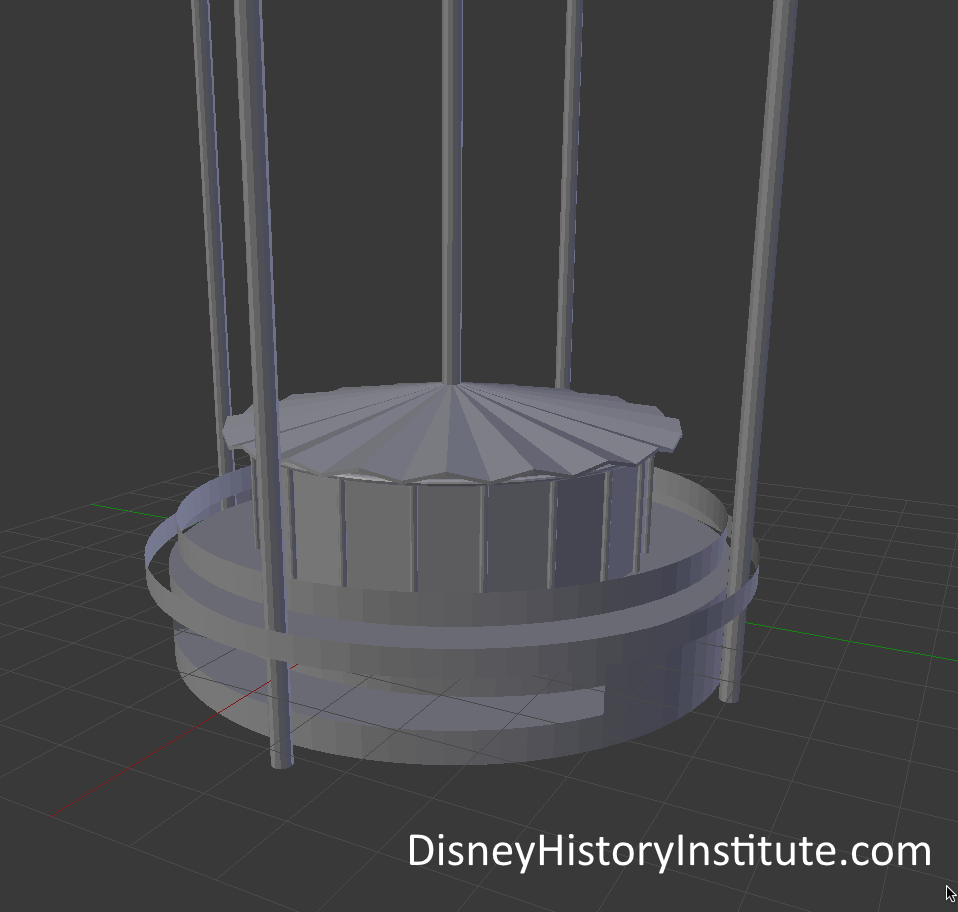 |
| This image was at the end of the first day trying to get an idea of how the base looked–an image I pretty much tossed when I noticed I had the the wrong idea of the floor above the base. |
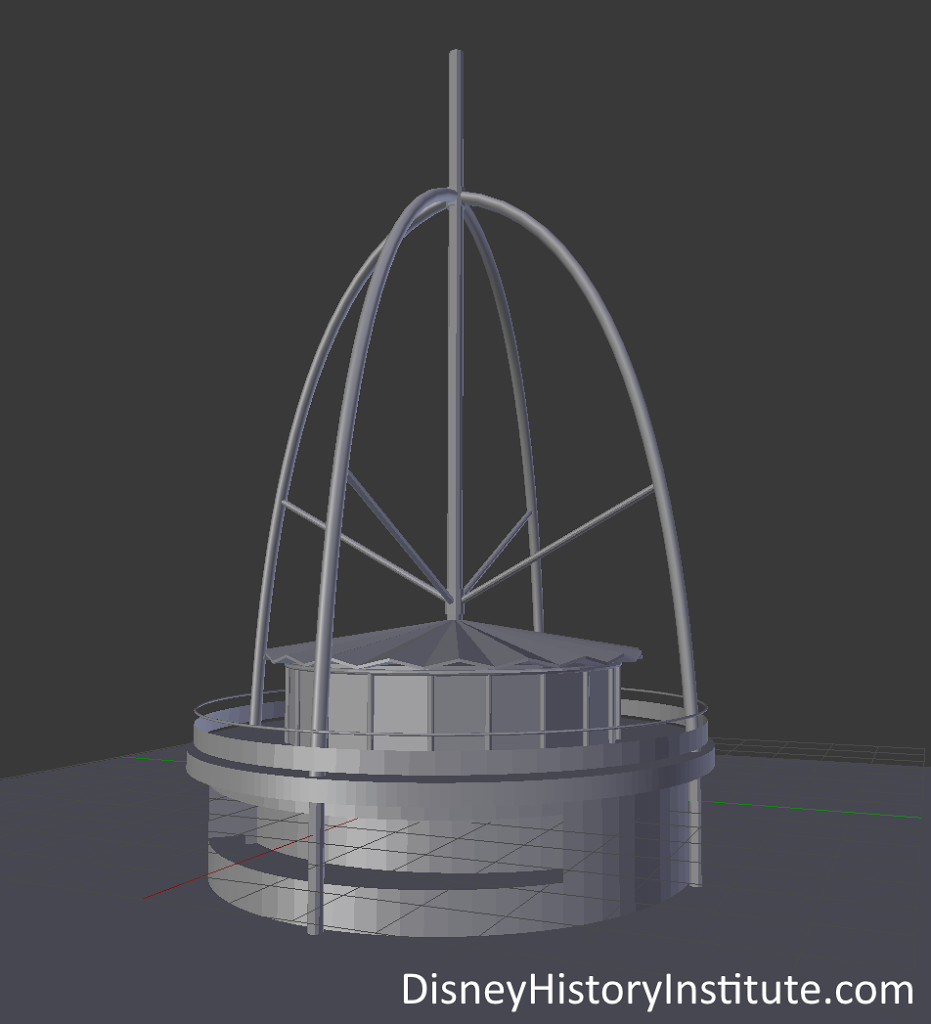 |
| The base was coming together, and finally curved the outside supports. |
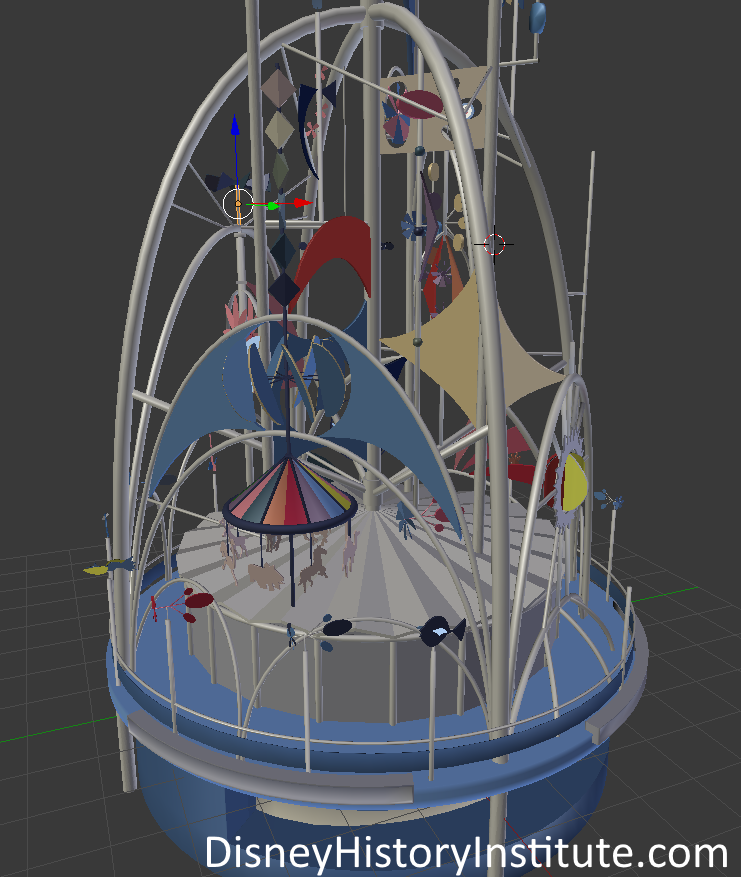 |
| This shows coloring and details being added to the Tower. |
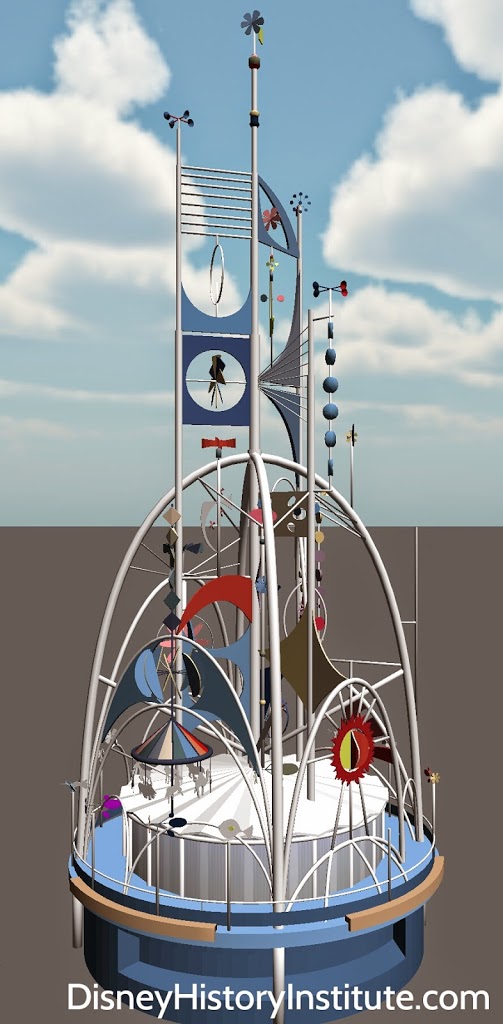 |
| This is the Tower in a prototype, which was used to show the motion of the different rotating parts. |
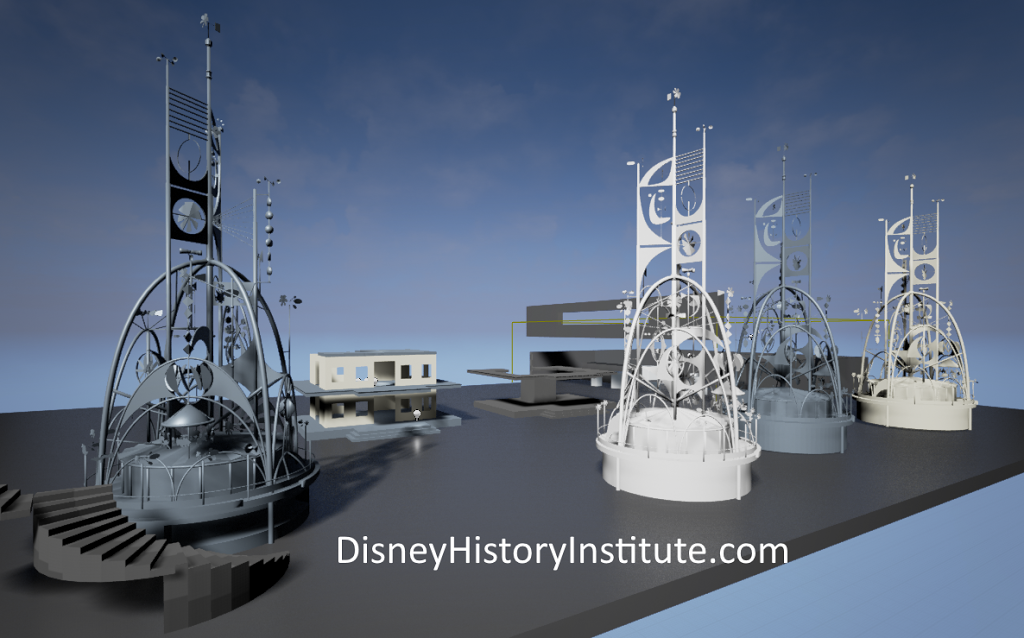 |
| The Towers that you see in this image were static objects: nothing in them was yet programmed to move. But it did show me how the shadows would display. |
 |
| One of the final images of the Tower before the video was made. |

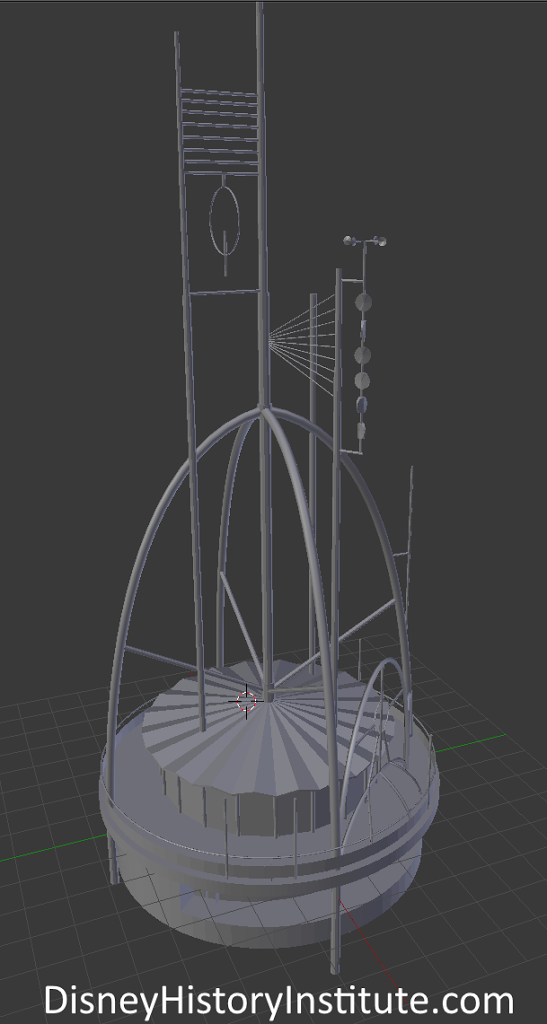
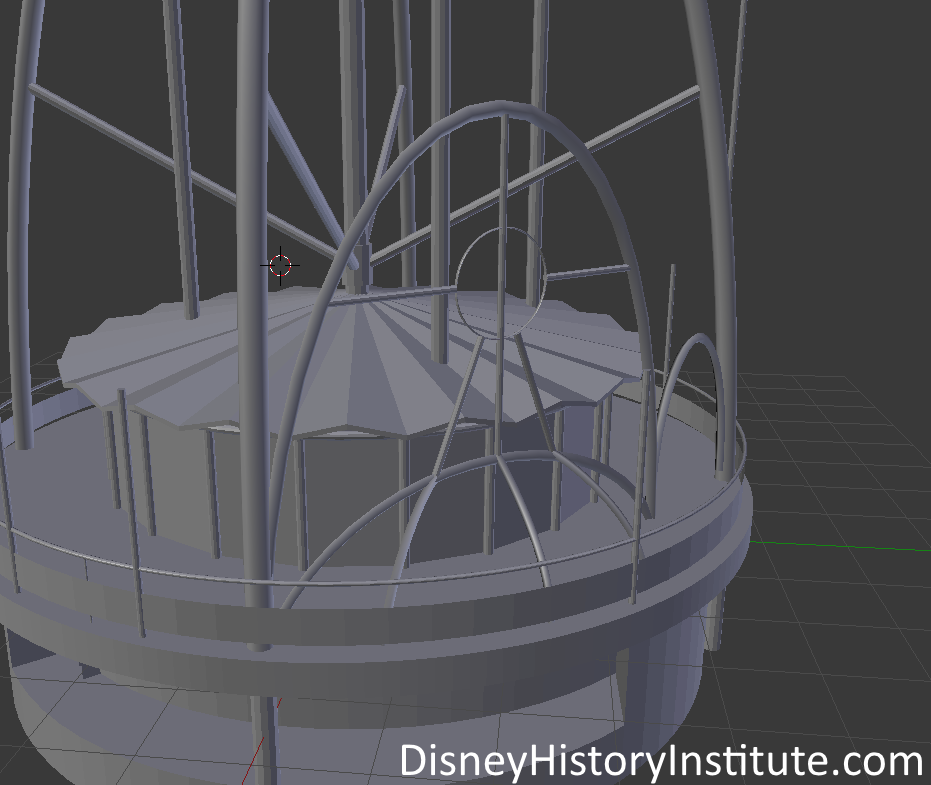
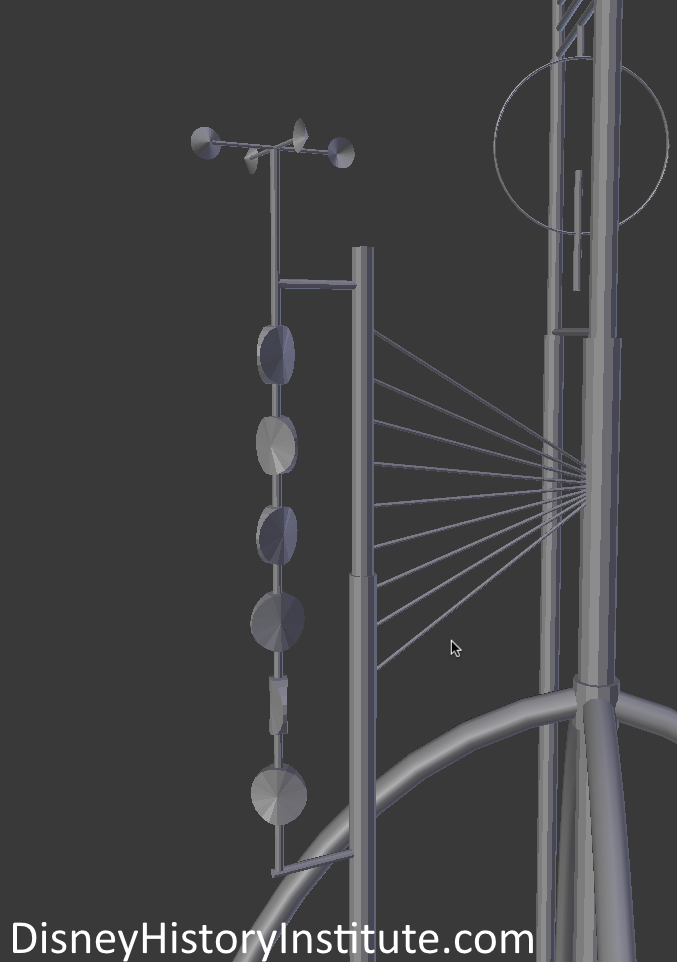
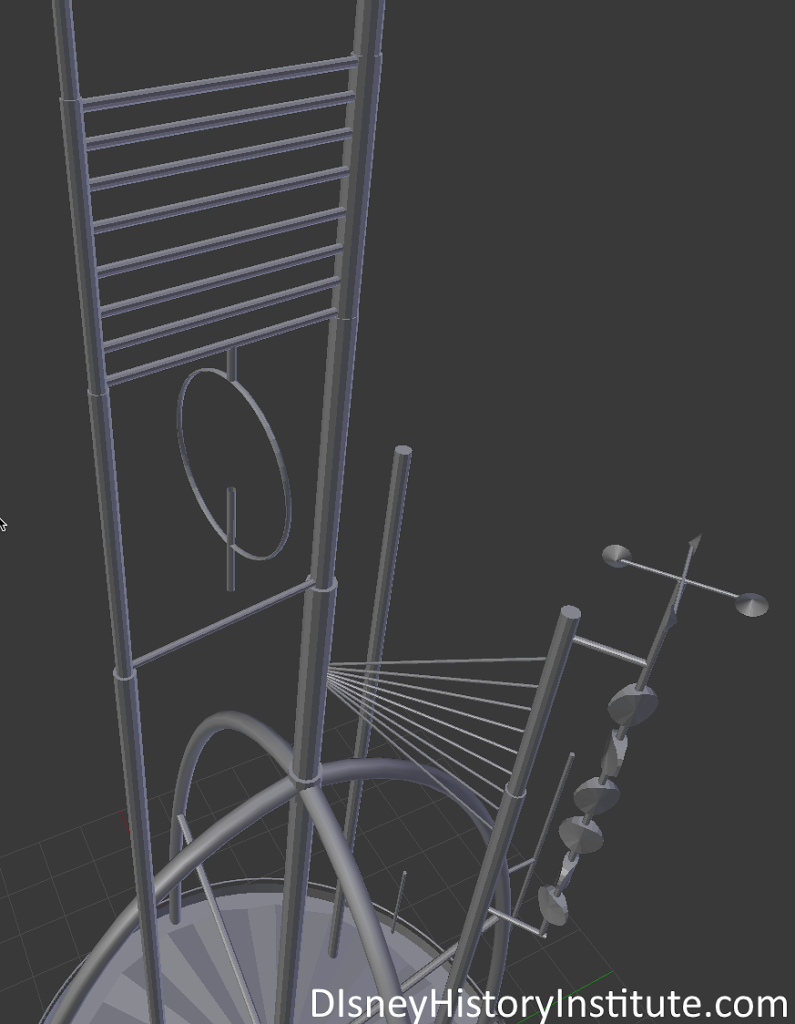
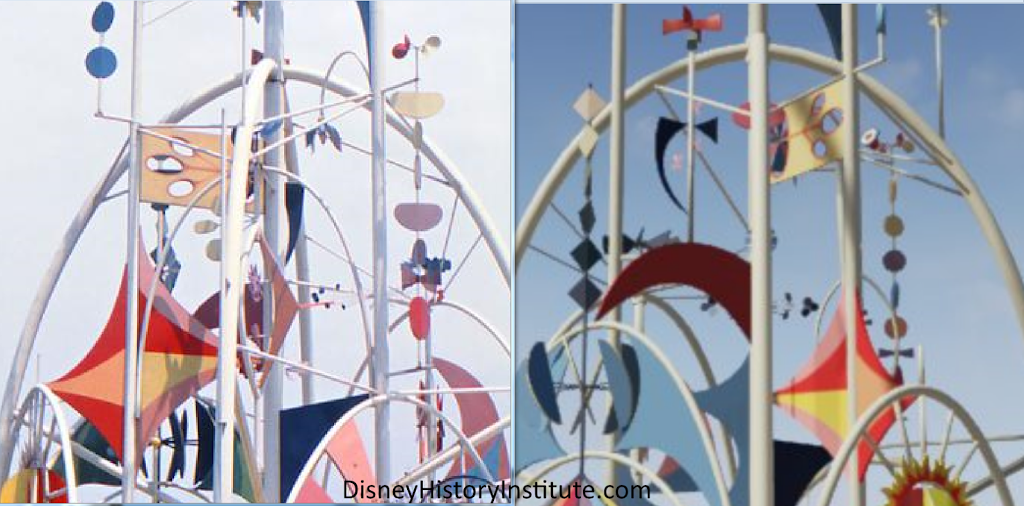
Wow! This is truly amazing! I was also born a few years later & have never seen this as a tower to walk around and see in full form. Thank you Jeremy for allowing us to enjoy this icon of Disney history. We appreciate your hard work & look forward to seeing more! Great job!
Splendid job! It adds the one thing pictures can’t give you. Great.
Here’s an idea for “plussing” the project: Rolly was disappointed when the supporting arches for the Tower were fattened up without his knowledge or permission in order to make the whole thing sturdier. He told Walt it looked like a “piece of crap.” Might it be worthwhile to adjust the Tower backwards to the nimble dimensions Rolly intended (based on the numerous photos of the scale model available), just to see what should have been there? Alas, I have to agree with Rolly that artistically speaking the piece was badly compromised when it was built.
I agree that it would be really cool to scale it back to what Rolly originally intended, and that can easily be done. (Okay, maybe not easy as I would need to go back a few versions to gt access to the original un-merged shapes, but could be worth it.) One thing to keep in mind is the Tower had a few changes made to it after the break between ’64 and ’65. The primary paint went from gold to white, other items color seems to have changed and quite a few spinners no longer were attached.
In my mind, there are four versions of the Tower. The twelve inch model, the 1/4″ scale, the one people saw in ’64 and the white one from ’65 with several items no longer there. Each would be quite interesting to see.
IN the winter of 1964/65, there was a large storm that damaged some small parts of the Tower.
Time to build a digital version of the rest of the Fair… 😉 Seriously, this is some fantastic work. Thanks for sharing!
Hi Jeremy. I just finished my documentary on the fair. Could you send me an email, I’d like to talk about this a bit more… ryan at worldsfairmovie.com